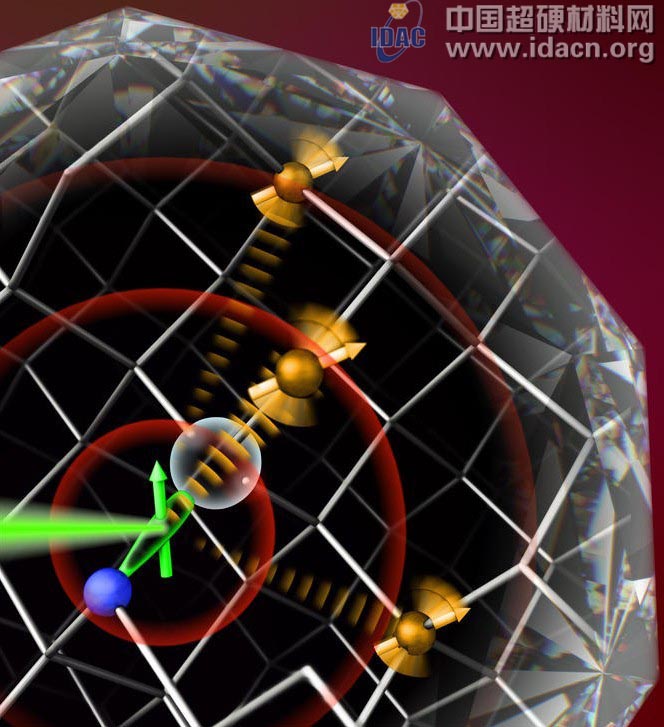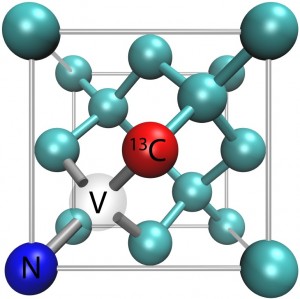Nuclear magnetic resonance (NMR) and magnetic resonance imaging (MRI) techniques, such as quantum information processing and nuclear spintronics, are based on the intrinsic quantum properties of an electron and nuclear spin. The electrons and the nucleus, like a strip magnet, can spin up and down in an oriented state. The NMR/MRI signal is directed in a certain direction by the polarized nuclear spin. The greater the polarization, the stronger the signal.
The US Energy Agency's Berkeley National Laboratory recently published a recent study that, under the adjustment of multiple series, the diamond-carbon 13-core spin hyperpolarization experiment greatly enhanced the sensitivity of NMR/MRI.

“The near-complete carbon 13-core spin polarization is ideal and perfect for any process that requires a pure initial spin state,†Bajaj said. “In addition, our method is hyperpolarized for any large batch of nuclei. It should also be applicable, including dynamic nuclear polarization enhanced NMR and spintronic devices.
The project was published in the journal Nature Communications by Bajaj, a senior scientist at the Pines research team. The original title was the sensitive magnetron study of diamond nuclear spin super. In addition to Bajaj and Pines, other collaborators include Hai-Jing Wang, Chang Shin, Claudia Avalos, Scott Seltzer and Dmitry Budke.
Over the past few decades, Pines and his team have experimented with countless ways to achieve hyperpolarization of nuclear spins, and they have developed NMR/MRI signals that are 10,000 times stronger than typical NMR and MRI experiments; In several device applications, they have been able to record and analyze detailed magnetic resonance spectra without a magnetic field. In this study, Pines and Bajaj used a diamond impurity in the center of the nitrogen vacancy, in which both luminosity and free spin were doubled.
Pure diamond crystals are a three-dimensional lattice of carbon atoms, each of which is combined with four atoms around it. When two adjacent carbon atoms are removed from the crystal lattice and leave two vacancies, a nitrogen vacancy center is created; one vacancy is also filled with one nitrogen atom and the other vacancy remains vacant. This causes the free electrons to be at a central position between the nitrogen atoms and the vacancies and causes an electron spin polarization state.

According to Hai-Jing Wang, in order to achieve effective migration of the spin, the energy structure of the source and sink must be matched; in view of this, the experiment assigns the electronic energy level to 0.1 Tesla, which is provided by an external magnet. This speeds up the polarization mobility from the center of the nitrogen vacancy to the nearby carbon nucleus.
The center of the nitrogen vacancy and its adjacent carbon nuclei are the best candidates for qubits; similar to charges, quantum spins can be used to encode data, like 0 and 1 in charge coding. However, unlike the charge, the quantum spin can be influenced by the quantum superposition effect, or both. By superimposing, qubits can store data exponentially, and processing speeds are billions of times faster than average computer computing.
Some conventional methods of controlling nuclear spins often require oscillating electromagnetic fields, which makes acquisition of higher spatial resolution more difficult. Wang said that by using optical patterns and static magnetic fields, spin control provides a simpler way to write the address of a set of diamond nitrogen vacancy centers. Some techniques applied to computer hard drives now have sufficient spatial resolution to implement these control schemes in a magnetic field.
Researchers believe that by a spin-spreading mechanism, the carbon 13 nucleus hyperpolarization near the center of the nitrogen vacancy can easily diffuse into other diamond carbon nuclei.
Pines said that if the external surface spin and the carbon nanonuclear hyperpolarization of the diamond surface can achieve two-stage contact, then the realization of diamond external nuclear spin hyperpolarization is also very likely. Previously, they have used optically polarized helium to demonstrate a similar situation with this approach.
Bajaj said that they are currently trying to perform spin polarization on the diamond surface. If successful, any sample in the NMR experiment can be polarized using chip-scale equipment. Since diamonds and magnets can be scaled down to micron size or smaller, it is possible in the future to produce solid-state nuclear polarizers on microfluidic chips.
The study was sponsored and supported by the US Department of Energy's Science Office. (Compiled from Lawrence Berkeley National Laboratory)
Corner cube Prism is also named retroreflector or trihedral prism.In the corner cube prism,three reflecting surfaces are perpendicular to each other,like the side wall of the cube.The input surface is perpendicular to the cube diagonal. Disregarding the anlge of the incidence,the output beam is parallel to the input one,but it is of opposite direction. Inset of the several corner prisms, for better matching,their extrance exit surface is often hexagonal.In case of this prism the phenomenon of full internal reflection occurs so it is not necessary,(however it is possible)to put mirror coating on the reflecting faces. Normally the reflection surfaces are AL reflection coating, and then covered with Cu and Black painting.
Pyramid prism/Corner Cube Retroreflector is always used to reflect the beam entering the prism face, regardless of its orientation to the beam. Corner cubes are widely used where precision alignment is difficult.

Corner Cube Prism
Corner Cube Prism,Corner Cubic Prism,Optical Corner Cube Prism,Glass Corner Cube Prism
China Star Optics Technology Co.,Ltd. , https://www.csoptlens.com